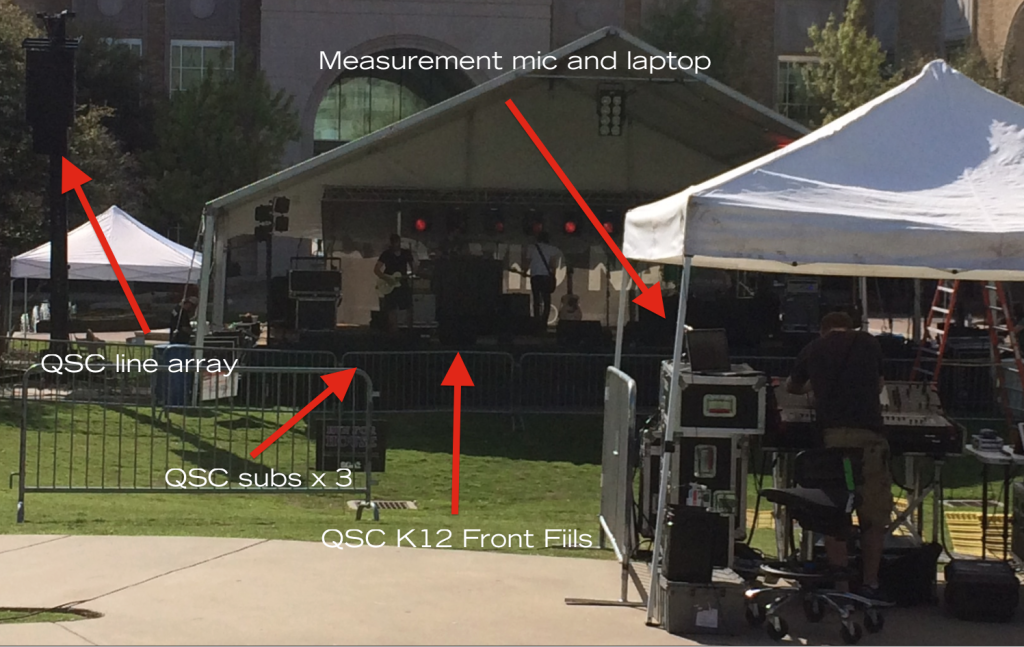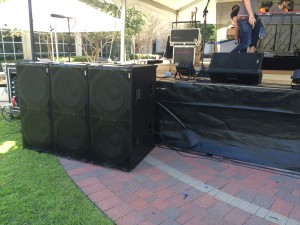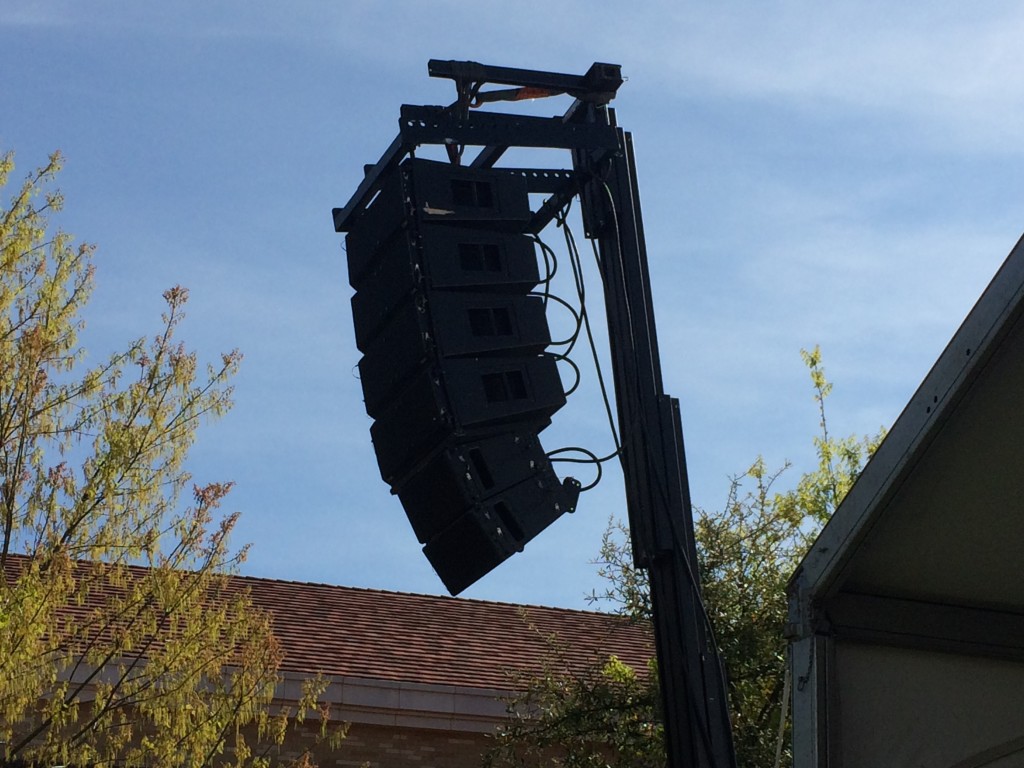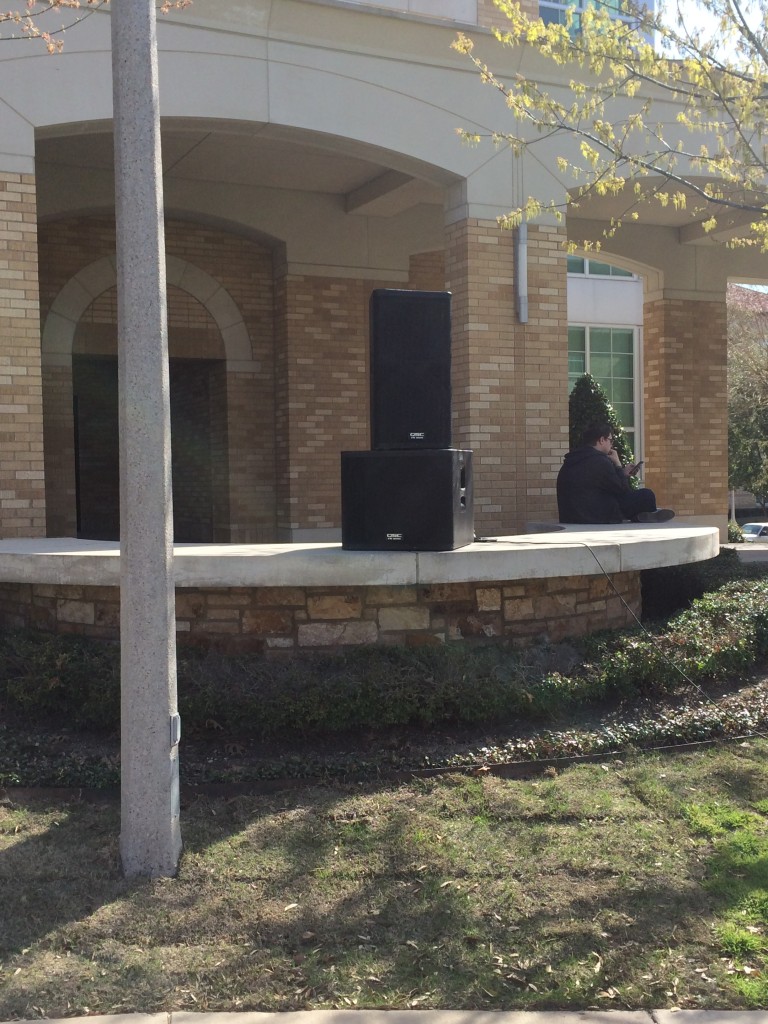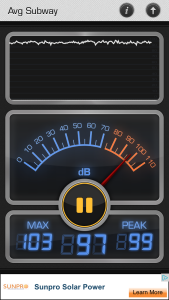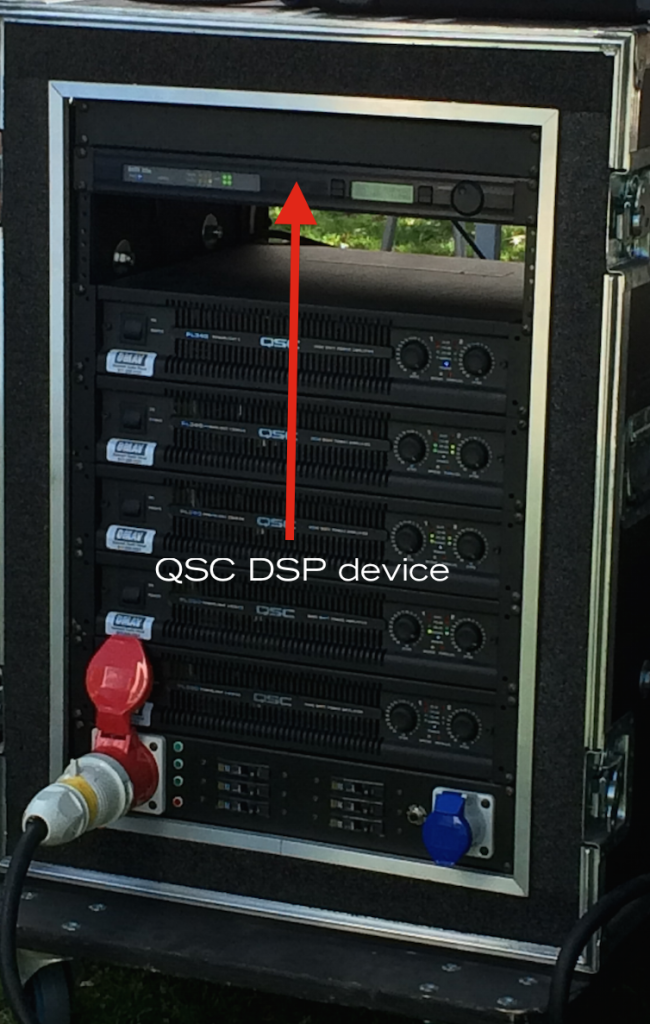Today I had the plan of visiting an outdoor stage and measuring and helping eq and delay a sound system for a fellow audio engineer.
Upon arrival I realized the band was already sound checking and at that point I really couldn’t do much but discuss the elements of the PA and how I would go about measuring it and “correcting” things. Interestingly the visiting FOH engineer had a measurement rig of some sort but the little bit of discussion I had with him and his responses suggest he is using his measurement rig as an RTA and nothing more.
A few highlights. It’s not easily seen in the photo above but the front fills were aiming toward the tent roof instead of outward toward where the crowd would later be. When I asked about the front fills, the visiting FOH engineer said that he didn’t need them. How can you argue with that?
I had just left the position I was in standing as close to the stage as possible and at the very middle of the stage discussing with my fellow engineer friend how the Main L/R PA wasn’t covering the center well at all. I guess if you stand down front and you hear anything, it’s all good? There was certainly plenty of subs at that position.
Speaking of subs, there were (6) double 18″ QSC subs split L & R.
The main speakers were hung from Genie towers.
Then there was a pair of QSC KW181 subs with QSC KW152 mains on top of those acting as delays.
The delay speakers were at least 80+ feet away from the mains. I was told the visiting FOH engineer had 2.5ms on the delays and I heard him say he had the drummer play to set the delay time. I didn’t say anything but I thought…”Interesting”
In case this isn’t already clear, 1 foot of distance between speakers is going to dictate approximately 1ms of time delay.
If you’ve got 100 feet of distance between speakers you’d be better of setting your delay time between those speakers (delaying the one further out in the crowd) 100ms instead of using your ears and a drummer. It isn’t a terrible method to use a click of some sort to time align delays with main speakers but when you’ve got a measurement app, there is zero reason to guess or not measure or just don’t delay at all. The visiting engineer may not understand how to make the measurement and set the delay time. Absolutely fine. I was in that position a few years ago. To be clear, setting delay times on speakers is one of the easier measurements to make and the easier settings to adjust. You can even verify your work. Once you insert the delay on your delay speakers, measure that zone again. If you’ve nailed the delay time, your mains and delays should measure the same with the mic in the right position and without moving it. Where do you put the mic? Where the two speaker zone (you’re only measuring one speaker at a time right?) cross over acoustically (not in frequency but in volume).
Since the subs were in front of the stage and the Main support lifts were to the side of the stage and back a big, logic would suggest that the subs would arrive early compared with the mains. This could be resolved with either the rack DSP or the FOH console (if subs were on an aux send) but obviously the subs were not aligned with the mains. Instead, the subs were early because when the kick drum hit, I could hear subs and then mains.
Basically, “I came, I listened, I learned, I left…” alll without ever taking my measurement rig out of my backpack.
A few things that became obvious while I was onsite.
1. Owning a measurement rig doesn’t mean you know what to do with one.
2. Front fills are necessary regardless of what the visiting engineer might think. It shouldn’t be left up to them to decide in my opinion. The system should be tuned and dialed in (levels between zones, eq and delay) prior to their arrival.
In this case the visitor engineer brought his own FOH console so it could be argued that being that far along in the system tuning process would of been impossible but I would counter with, “all of that stuff could of been achieved at the DSP in the rack” and should of been. Without a measurement rig and the skills it takes to use it and decipher the results you really are just hiding your head in the sand. I’m not saying it’s easy but I am suggesting it’s necessary.
What I heard coming out of the PA sounded typical of what I expect of bands these days. Too loud, too much low end and lots of compression so nothing has any space. Like it’s all shoved into a bucket. I measured 100+ db on my Iphone at the FOH position and things were obvious louder as I got closer to the stage. I’m not sure things need to be that loud when you’re sound checking a band during the day and no one is around. Maybe I’m too old.
In conclusion, a digico SD5 with a QSC line array with matching DSP and power amps can certainly sound better than what I heard. It’s clear after this experience that I still have a long way to go in my pursuit of system design and optimization but also in my people skills. If was difficult not to get involved in the whole conversation but no one asked me what I thought. Maybe next time I can arrive earlier and help the situation a bit. If the PA had been time aligned, zones balanced and the system tuned prior to the visiting engineers arrival, I don’t think he would of disliked the system. Instead he did the best he could with what he was given and what he knows. Clearly there is work to be done…


